It’s amazing how fresh herbs elevate a dish. I always try to have a few at hand—with mint being right up there at the top of the list of useful, versatile, and delicious herbs. I’ll talk about different types of mint (including thoughts on peppermint vs spearmint) a bit later in this post.
I often cheat with my herbs. I’ll buy some herb plants and keep them in my kitchen for easy access. They never see the garden. These herbs tend to not last long, maybe a few weeks. Then I have my garden herbs, which last much longer and are harvested when I need more bulk. This allows me a steady stream of the fresh herbs I use the most.
Growing Mint
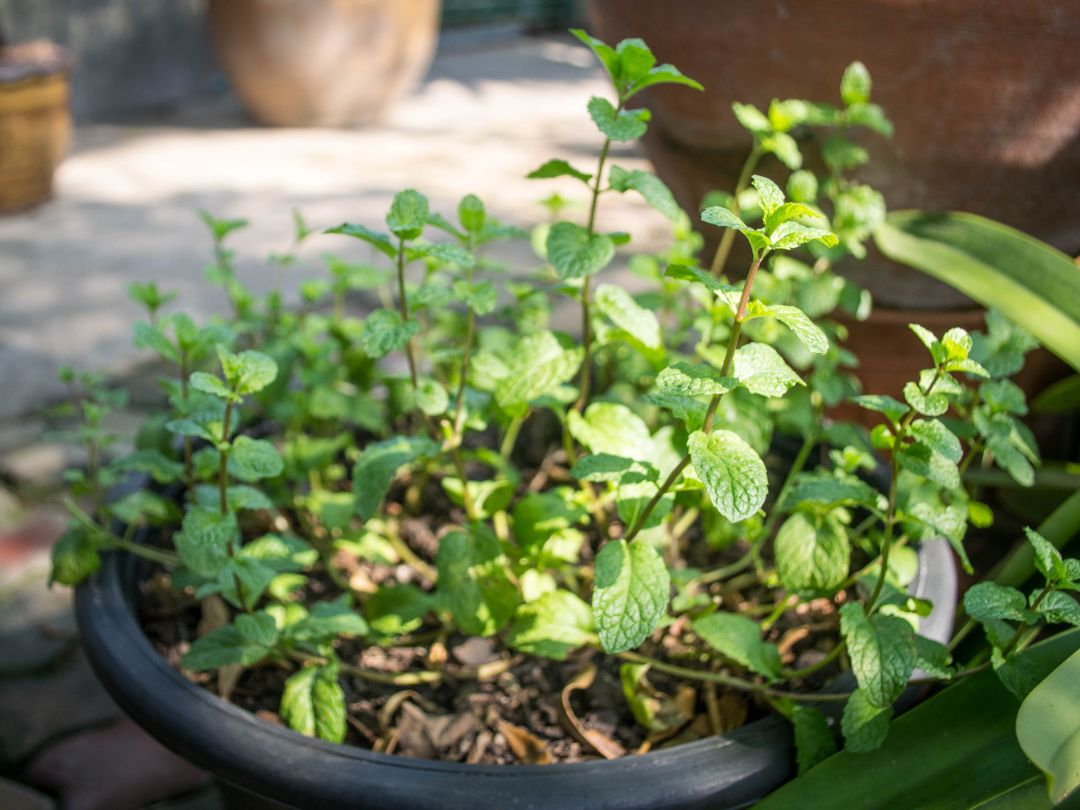
When you bring your mint plant home, you can plant it or put it in a sunny spot in your kitchen. Mint can be propagated by cutting a stem and putting it in water. Setting up a propagation station in a sunny pocket of your kitchen is a great way to make the most of the herbs you buy. Like with rosemary, this process will yield you another plant, which will yield you more plants . . .
Once the mint starts rooting, add it to an outdoor container in a sunny location. Mint is an easy herb to grow—maybe too easy. Given enough water and sufficient sunlight, mint will take off. These plants spread easily and can become invasive. This means the plant can really take over a planting bed. I always grow mine in containers and by themselves. It’s suggested you don’t plant one type of mint with another type so that the different mints keep their individual taste.
You can grow mint in partial shade, but the mint won’t be as strong tasting and could get pale and leggy. However, it is possible for the mint to get too much sun and dry out, and therefore need more shade.
You’ll want to harvest your mint sprigs before the plant starts to flower. Don’t be shy about it, regular harvesting encourages new growth and it’s the new growth that’s the most flavorful. Don’t harvest too far down, keep a few inches of stem on the plant.
Uses for Mint

There are so many uses for mint. Let’s go through a few of them—and then I’ll fill you in on my favorite mint.
1. Add mint to your drinks like Karen did! Add a sprig of mint to your water or lemonade
2. Make a tea
3. Blend a couple of spearmint leaves into your fruit or vegetable smoothie
4. Make a mint chutney and spice up a dish
5. Toss it in a salad or mix with honey and lemon juice to dress a salad
6. Make mint ice cubes
7. Use it in a marinade for meat
8. Mix it into yogurt for a veggie dip
9. Chew on it and freshen your breath
10. Add it to your aromatherapy rituals
11. Spice up fruit salad, particularly with watermelon
12. Repel (and attract) insects: In the garden, mint repels flies, fleas, spiders, ticks, aphids, moths (and mice, too). It also attracts! The flower of the mint attracts bees, beneficial wasps, and beneficial flies like hoverflies and tachinid flies.
Making Tea with Mint
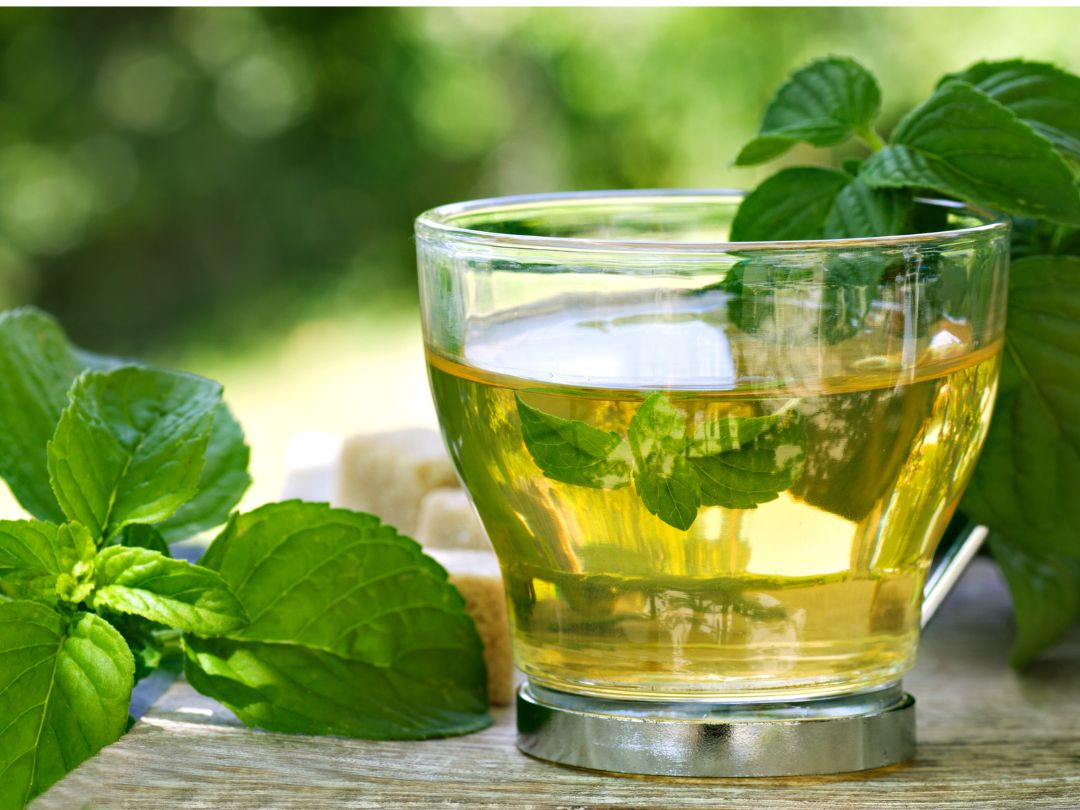
We could get fancy here and call it a tisane. A tisane is an herbal tea. A “proper” tea would come from the leaves of Camellia Sinensis.
- For mint tea, grab about a bunch (maybe 10-15) fresh mint leaves and rinse ‘em.
- Once clean, you’ll want to release the oils or flavors before you use it. You can do this by rubbing the leaves in between your fingers; use a mortar and pestle to gently crush the leaves; or use the back of a spoon to lightly crush the mint leaves. You don’t want to be brutal with the leaves —think massage vs rough-them-up! If you smash the mint leaves, the tea will have a kind of bitter and dirty taste.
- Next, place the lightly crushed leaves in a mug, or in a tea ball if you want to avoid draining afterword. Boil your water and then wait for it to cool (you don’t want to boil the leaves, but rather place them in a very hot bath).
- Fill the mug with the mint leaves with the used-to-be-boiling water. Then cover, letting them steep for at least 7 minutes. If you want the tea to be stronger, let it steep for longer —probably around 15 minutes.
- Once steeped to your satisfaction, remove the tea ball or strain the leaves out using a filter or a spoon. You can drink as is, or you can add lemon, sugar, or honey . . . or you can add green tea and make it a Moroccan tea.
Alice Waters usually finishes her meals with a mint and lemon verbena tisane. Other lovely herbs she recommends adding to mint tea are lemon-thyme, lemon grass, ginger, rose petals, or citrus leaves. She also recommends pouring boiling water directly onto the non- crushed leaves to make the tisane.
You can make a big batch with about 80 leaves—and make it iced!
Types of Mint
The mints we use the most are peppermint (Mentha piperita) and spearmint (Mentha spicata). But there are over 600 varieties of mint. Some of the most common ones we use are:
- Spearmint (Mentha spicata)
- Moroccan mint (Mentha spicata var. crispa ‘Moroccan’)
- Strawberry mint (Mentha spicata subsp. citrata ‘Strawberry’)
- Water mint (Mentha aquatica)
- Peppermint (Mentha piperita)
- Chocolate mint (Mentha x piperata f. citrate ‘Chocolate’)
- Grapefruit mint (Mentha x piperata f, citrate ‘Grapefruit’)
- Basil mint (Mentha x piperata f. citrate ‘Basil’)
- Apple mint (Mentha suaveolens)
- Pineapple mint (Mentha suaveolens ‘Variegata’),
- Banana mint (Mentha arvensis ‘Banana’)
- Ginger mint (Mentha x gentilis ‘Variegata’)
That’s a lot of mints to choose from. You really only need to start with one.
Peppermint vs Spearmint
Peppermint
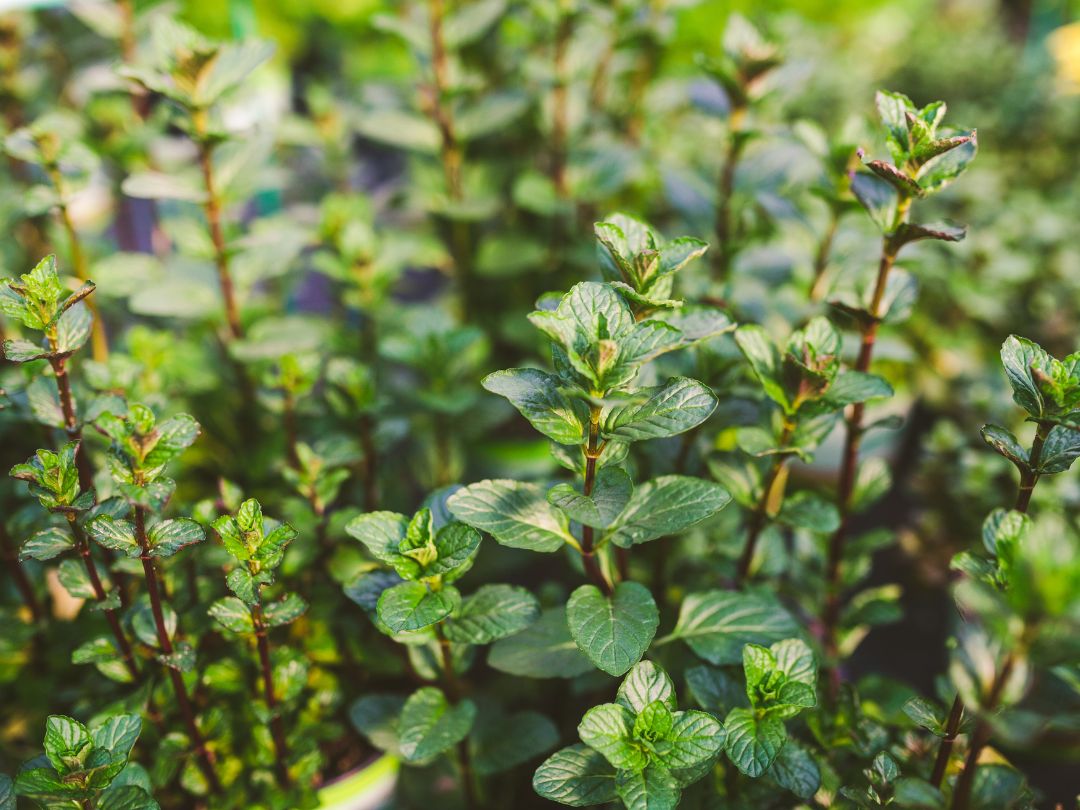
Peppermint (Mentha piperita) is a cross between Mentha aquatica (Water Mint) and Mentha spicata (Spearmint). It’s the most common mint for oil.
Other Mentha piperita in this family include Chocolate Mint, Grapefruit Mint and Basil Mint.
Peppermint is highly aromatic—meaning this one has a strong pleasant smell. It is also a mouthful of menthol. The strong taste and can overwhelm a recipe.
Peppermint is:
- Stronger, more “peppery” flavor than spearmint – usually too strong for culinary purposes. Use if the recipe specifically calls for peppermint.
- Best for medicinal purposes, for pain reduction, digestion, congestion and relaxation. This is the mint usually used in balms and rubs used for nasal congestion.
- Peppermint has a cooling effect because it has much more menthol than spearmint. This leads to a stronger flavor, think more toothpaste than chewing gum.
- Good for desserts, especially those with chocolate. Used for mint ice cream, chocolate mint brownies, or cookies and all those takes on “peppermint bark.” And if you want to make a candy cane, this is the mint for you.
- Great tea.
Spearmint
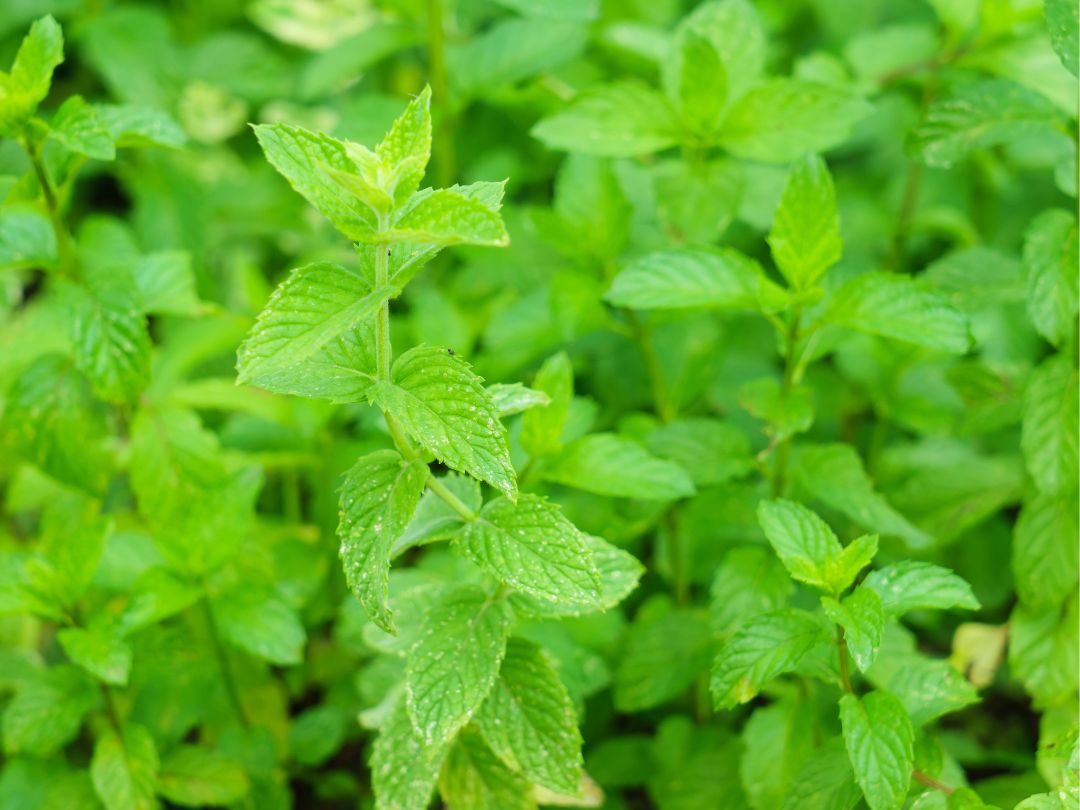
Spearmint (Mentha spicata) is also aromatic and widely cultivated. It can be added fresh to salads, vegetable dishes, and spring rolls. Or added dried to sauces and soups. Fresh, the taste is a bit strong. To avoid overpowering the palate, you can tear up or chiffonade all but the smallest leaves. You can go ahead and use this mint for drinks and cocktails. You can also add a few whole sprigs for garnish!
Spearmint is:
- Sweeter that peppermint and more delicate in flavor
- Better for savory dishes—in general, it’s used in most chef dishes calling for mint
- Also good for medicinal purposes, like improving respiratory health, circulation, and digestion
- Great tea
- Used for drinks. It’s the mint in Mojitos, mint juleps, and iced tea. Moroccan Mint tea is usually a mix between Spearmint and Green tea
How can I tell the difference of peppermint vs spearmint?
In general, spearmint leaves are bigger and lighter green than the leaves of peppermint. Peppermint not only has a darker green leaf, but also a deep burgundy to purple in the stem (and sometimes in the leaves). You can also try crushing or tasting a leaf. The strong aroma and menthol punch should give peppermint away.
 Health Benefits of Mint
Health Benefits of Mint
Mint tea is said to help improve digestion, relieve stress, improve sleep, eliminate bad breath, provide relief from headaches, and boost immunity. According to a 2021 scientific article, “Among medicinal plants, mint (Mentha species) exhibits multiple health beneficial properties, such as prevention from cancer development and anti-obesity, antimicrobial, anti-inflammatory, anti-diabetic, and cardioprotective effects, as a result of its antioxidant potential, combined with low toxicity and high efficacy. Mentha species are widely used in savory dishes, food, beverages, and confectionary products. Phytochemicals derived from mint also showed anticancer activity against different types of human cancers such as cervix, lung, breast and many others.”
I just find it plain relaxing after dinner.
We partner with select companies whose products and/or services we love. Some of the links on this page may be affiliate links. If you purchase an item using our affiliate link, we may receive a small commission (at no added cost to you). We appreciate your support.

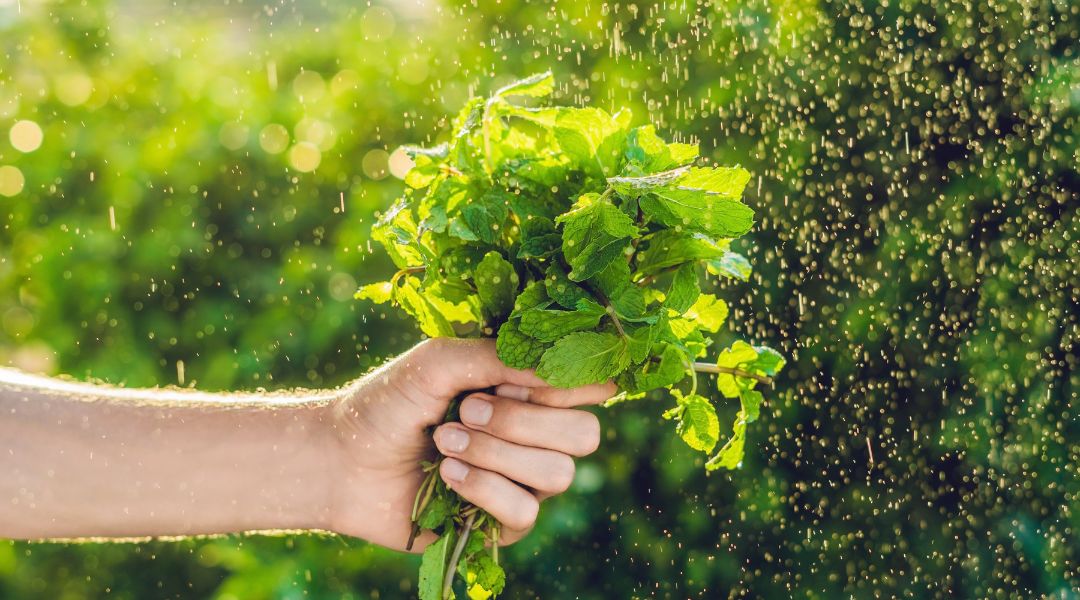
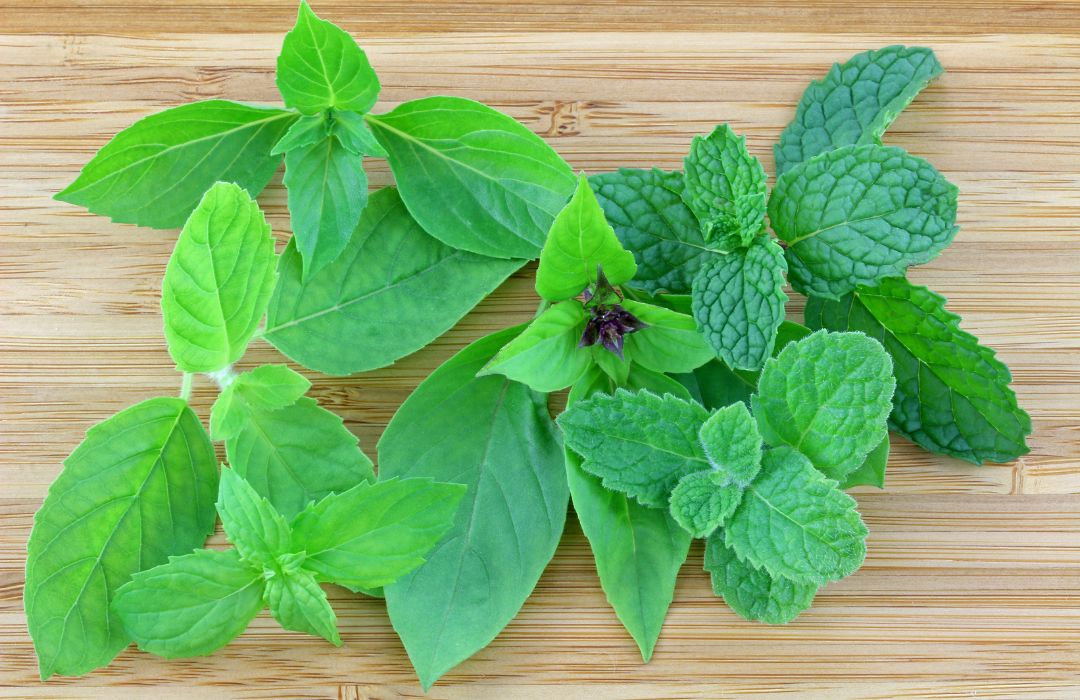
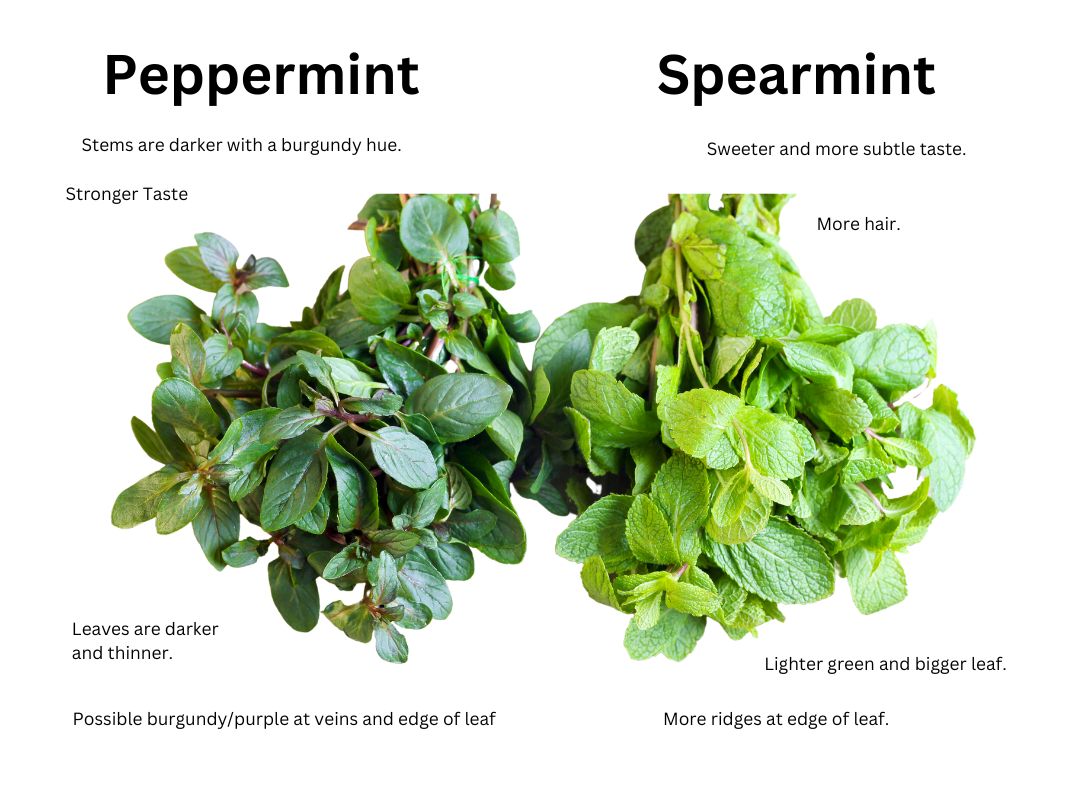 Health Benefits of Mint
Health Benefits of Mint